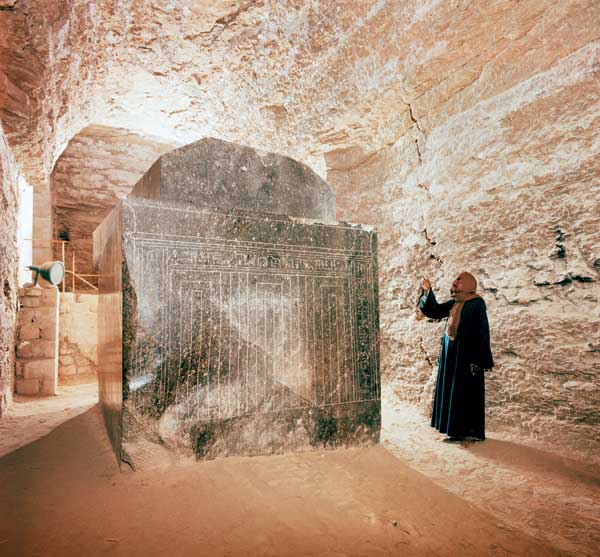The Evidence: Funerary Stelae
The Apis Bull Inscriptions
Sidebar to: How to Date a Pharaoh

Ancient Egyptians worshiped Apis bulls as manifestations, or heralds, of Ptah, the creator-god of Memphis, 15 miles south of modern Cairo. The Apis cult stretches back to the earliest dynasties, and the bulls themselves were associated with the pharaoh. Only one Apis bull at a time was chosen to preside over the cult; when that bull died, there was national mourning, the embalmed bull was transported in procession from Memphis to nearby Saqqara, where it was buried in underground catacombs known as the Serapeum, and a new bull was chosen.
In 1850 the French archaeologist Auguste Mariette discovered the Serapeum at Saqqara. The catacombs contained mummified bulls, massive stone sarcophagi (such as the one shown) and—especially important for chronologists—inscribed stelae dedicated by high priests at the death of each Apis bull.
Many of the inscriptions include the names of the pharaohs who ruled during an Apis bull’s lifetime, as well as the bull’s birth date, death date and life-span. These texts have enabled scholars to date securely the reigns of Egyptian pharaohs—and any other rulers with whom those pharaohs were in contact—back to 664 B.C.
Following is a quotation from the earliest inscription found in the Serapeum. It tells us that the Nubian pharaoh Taharqa (c. 690–664 B.C.) preceded the pharaoh Psamtik I (664/663–610 B.C.) and that the bull died at the end of Psamtik’s 20th regnal year:
Already a library member? Log in here.
Institution user? Log in with your IP address.

